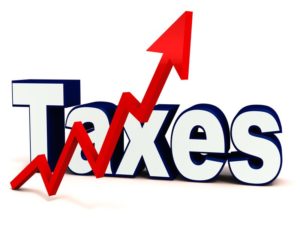OP-ED: Prop. 13 is working, reject Prop. 15’s $12 billion annual tax increase
By Jon Coupal and Ernest Dronenburg
 Come November, Proposition 13 faces its biggest political battle at the ballot box. It is instructive to ask whether that iconic tax affordability measure remains good tax policy for California.
Come November, Proposition 13 faces its biggest political battle at the ballot box. It is instructive to ask whether that iconic tax affordability measure remains good tax policy for California.
As the just-released property tax assessments rolls from several California counties reveal, Proposition 13 is working exceedingly well at keeping homeowners and small business owners from losing their properties to skyrocketing property taxes, while delivering government a reliable source of revenue. Voters would be foolish to repeal one of its major protections this November.
Take San Diego County, for example. The assessed value of all taxable property increased to a record high $604.75 billion, more than a five percent increase over last year. Because the state-set “lien date” is January 1st, any potential impact from COVID-19 won’t show up in this year’s numbers. Nonetheless, there is little to suggest that the county will see any major downturn in the real estate market, notwithstanding the pandemic.
San Diego’s experience with Proposition 13, as with most California counties, should lay to rest the notion that Proposition 13 has starved local government of revenue. Since 1978, increases in property tax revenue for local governments have far exceeded population and inflation. And while California now has the highest income tax rate, gas tax and sales tax rate in America, we remain in the top third (17th out of 50) in per capita property tax revenue. In short, we are not a low property tax state.
Hardly an outlier, San Diego County’s benefits from Prop. 13 are evident in the other counties that just reported their assessment rolls. These eleven counties all enjoyed big increases in taxable value that produced more revenue for schools and governments, including Fresno (up 5.5 percent), Marin (4.5 percent) and Orange (4.72 percent).
So how is it possible that, over the course of 41 years of history, Prop. 13 continues to work so well? Prop. 13 is an implicit contract with government that says property owners agree to pay a maximum property tax rate of 1 percent for as long as they own the property and agree to an annual increase of that taxable value up to 2 percent. When the property changes owners, it is reassessed at the market value and the new owner gets the benefit of a transparent and predictable tax they can afford. Prior to Prop. 13, every year was a guessing game as to whether you could afford your property taxes.
But now, far-left progressives and tax-hungry public sector labor interests want to strip away that protection from business and industrial properties in order to seize what they believe to be between $6 billion to $12 billion annually in taxes. Even their estimate of revenue has huge volatility.
Their Proposition 15 proposal on the November ballot would require continuous reassessment of business properties by removing the two percent cap on annual increases.
There are many reasons to reject Prop. 15. But as the 58 counties release their assessment rolls, it’s more evident than ever that Prop. 13 has delivered affordability for property owners and a stable and growing revenue source for schools and local governments. We shouldn’t abandon a system that’s working.
We should reject Proposition 15 in November. It’s obvious that it will have a negative impact on revenue stability for our schools and on stability for taxpayers. We will see businesses closing not because of the pandemic, but because they cannot afford to pay their property taxes.
Jon Coupal is the president of the Howard Jarvis Taxpayers Association and Ernest J. Dronenburg, Jr. is the elected San Diego County Assessor/Recorder/Clerk and former 20-year member of the California Board of Equalization and Chairman of its Property Tax Committee.
the attachments to this post:





















